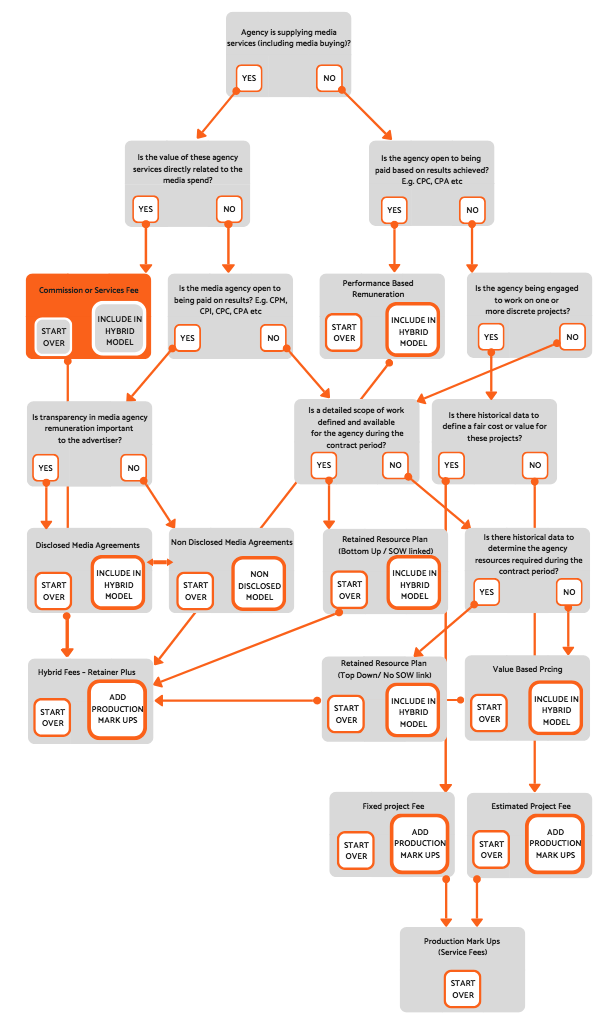The oldest and still relatively common approach to supplier remuneration in marketing based on the media commission but extended to almost all marketing services provisions. It is simply an agreed commission or mark up service fee on costs to cover agency remuneration. Typically only applied to external and third party costs but this is become more complex with suppliers often integrating these traditional third party costs into their service offering either directly of with equity in these third parties.
-
- This is the most traditional agency fee model and is based on the media commission paid by media providers.
- With the increase and diversity of media channels these commissions of services fees are often variable by channel.
- If the non-media services are a significant part of the services offered you may need to consider a hybrid model.
Advantages
- Easy to agree remuneration as pre-agreed based on commission rates or service fees.
- Remuneration is limited by the overall size and value of the project.
Implications
- Does not encourage effective buying, as this reduces the effective commission to the service provider.
- Non-Disclosed commissions or rebates to the service provider are encouraged as this also increases the direct commission received by the service provider.
- The value of the project often does not reflect the specific resources required to service the job properly.
- Often leads to juniors working on the account to minimise cost to company by the service provider.



